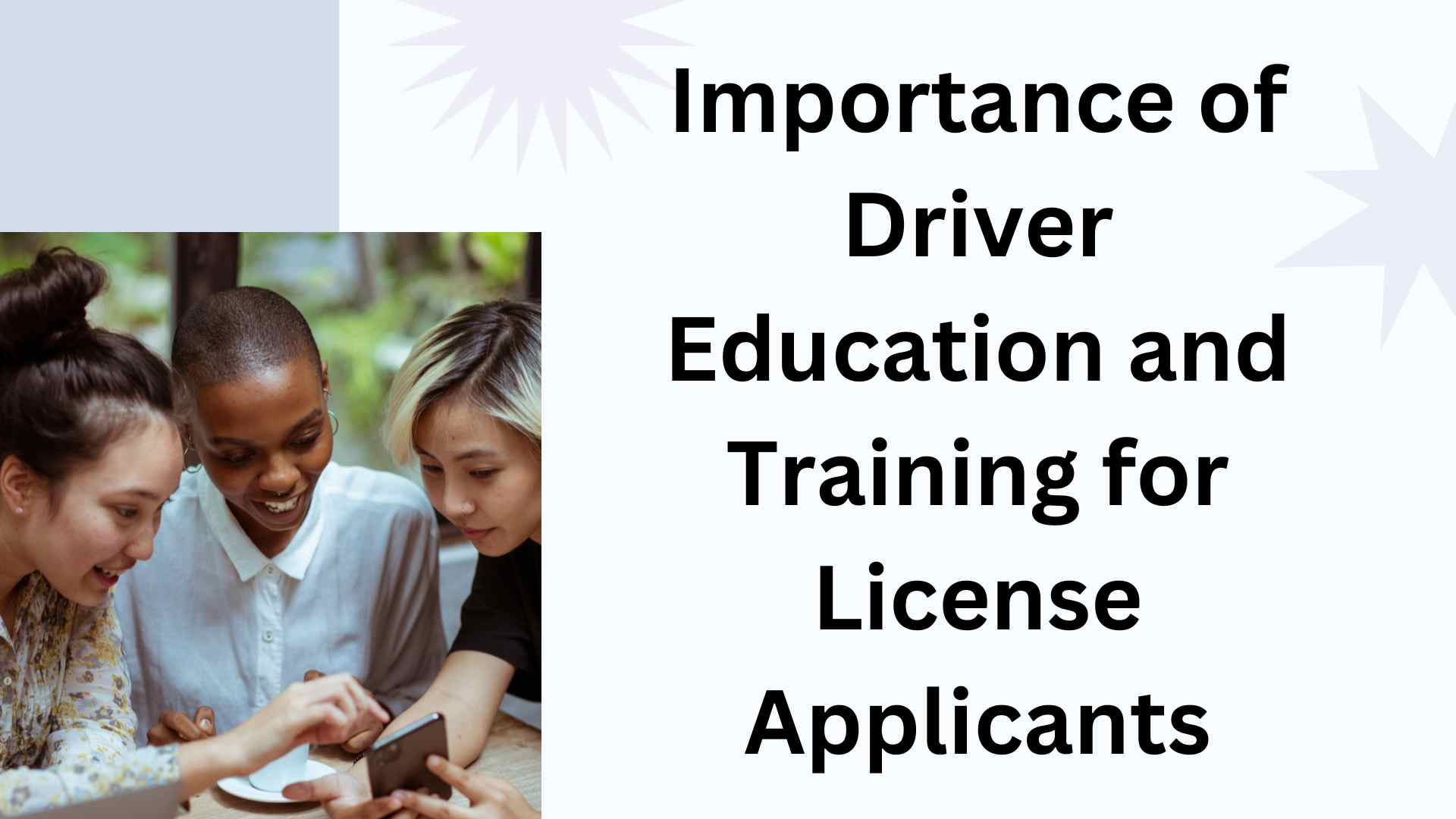Driving license also known as a driver’s license or a driver’s permit, is an official document issued by a government authority that grants an individual legal permission to operate a motor vehicle on public roads. the necessary tests and met the requirements to demonstrate their knowledge, skills, and ability to drive safely.
Driver education and training play a crucial role in preparing individuals for the responsibility of operating a motor vehicle. Obtaining a driver’s license is about developing the knowledge, skills, and attitudes necessary to become a safe and responsible driver. This article explores the importance of driver education and training for license applicants.
➨Road Safety Knowledge:
Driver education programs provide license applicants with comprehensive knowledge of road safety rules and regulations. They cover topics such as traffic laws, road signs and signals, right-of-way rules, speed limits, and safe driving practices. Understanding and applying these rules and regulations is essential for maintaining order and preventing accidents on the roads.
➨Hazard Awareness and Defensive Driving:
Driver education and training emphasize hazard awareness and defensive driving techniques. Applicants learn to anticipate and respond to potential hazards, such as aggressive drivers, pedestrians, adverse weather conditions, and road obstacles. They are taught defensive driving strategies to minimize risks and make informed decisions in challenging situations.
➨Developing Vehicle Handling Skills:
Driver education programs include practical training that allows license applicants to develop essential vehicle handling skills. These skills include steering control, braking techniques, acceleration and deceleration, lane changing, parking, and maneuvering in various traffic scenarios. Learning these skills under the guidance of professional instructors helps applicants build confidence and competence behind the wheel.
➨Understanding the Consequences of Unsafe Driving:
Driver education and training also focus on highlighting the potential consequences of unsafe driving behaviors. License applicants learn about the risks of distracted driving, impaired driving, aggressive driving, and other dangerous behaviors. Understanding the potential outcomes, such as accidents, injuries, legal consequences, and increased insurance premiums, helps applicants make informed choices and prioritize safety.
➨Building Responsible Attitudes:
Driver education programs emphasize the development of responsible attitudes towards driving. License applicants are encouraged to adopt a mindset that prioritizes the safety of themselves, their passengers, and other road users. They learn the importance of obeying traffic laws, respecting road signs and signals, and practicing courtesy and patience on the road. These attitudes contribute to a safer and more cooperative driving environment.
➨Familiarity with Traffic Laws and Regulations:
Driver education and training ensure that license applicants have a thorough understanding of traffic laws and regulations specific to their jurisdiction. This knowledge is essential for making informed decisions on the road, such as knowing when to yield, how to navigate intersections, and when it is safe to pass other vehicles. Compliance with traffic laws not only promotes safety but also helps maintain the flow of traffic and reduces congestion.
➨Preparation for Challenging Driving Situations:
Driver education programs expose license applicants to various challenging driving situations they may encounter in real-life scenarios. This includes driving at night, in adverse weather conditions, on highways, and in heavy traffic. By experiencing and learning to navigate these situations under the guidance of professional instructors, applicants gain the confidence and skills necessary to handle such challenges safely.
➨Awareness of the Impact of Impaired Driving:
Driver education and training emphasize the dangers of impaired driving, including the use of alcohol, drugs, or prescription medications that may affect driving ability. License applicants are educated on the consequences of impaired driving, including the increased risk of accidents, injuries, and fatalities. They learn the importance of making responsible choices and seeking alternative transportation options when they are impaired.
➨Preparation for Emergency Situations:
Driver education programs also cover emergency procedures and techniques to handle unexpected situations on the road. License applicants learn how to respond to emergencies such as vehicle malfunctions, tire blowouts, sudden braking, and avoiding collisions. This preparation equips applicants with the knowledge and skills to act quickly and effectively in critical moments, potentially preventing accidents or minimizing their severity.
➨Lifelong Learning and Skill Enhancement:
Driver education and training provide a foundation for lifelong learning and skill enhancement. Obtaining a driver’s license is just the beginning of a driver’s journey, and ongoing education and skill development are essential to remain a safe and responsible driver. License applicants who have undergone proper training are more likely to recognize the importance of continuous improvement and seek
Conclusion:
Driver education and training play a vital role in preparing license applicants for the responsibilities of driving. Through comprehensive knowledge of road safety, hazard awareness, defensive driving techniques, and practical vehicle handling skills, applicants are better equipped to navigate the roads safely. By understanding the consequences of unsafe driving behaviors and cultivating responsible attitudes, applicants can contribute to a safer driving culture. It is crucial for license applicants to invest time and effort in driver education and training, as it lays a strong foundation for a lifetime of safe and responsible driving.

